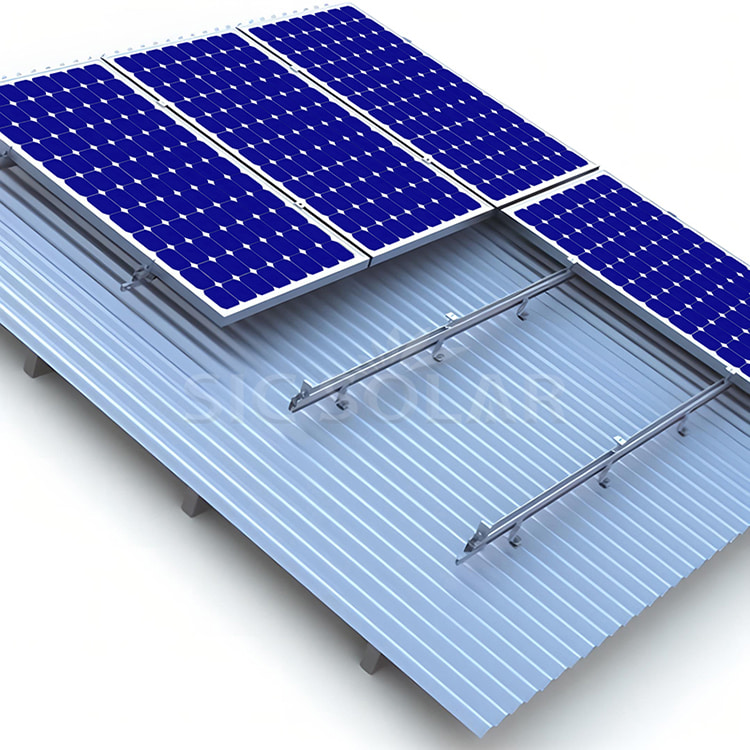Installation of Solar Panel Roof Mounts: How to Ensure Structural Safety
2025-07-04
The installation of solar panels is increasingly popular as a sustainable energy solution, and ensuring that the roof can safely support the system is of paramount importance. Structural safety during the installation of solar panel roof mounts is essential not only to ensure the longevity of the panels but also to avoid any damage to the building and the safety of its inhabitants. This essay discusses the factors to consider when ensuring the structural safety of roofs during solar panel installation.
1. Roof Structural Assessment
Before any installation, a thorough roof assessment is necessary. The type of roof, its age, and the materials used are key elements to evaluate. A licensed structural engineer should conduct the assessment, considering the following factors:
Roof Type and Material: The structural integrity of different roof types (e.g., pitched, flat, metal, or shingle) can vary significantly. Certain roof materials, such as clay tiles or older shingles, may not be as durable or able to handle the additional weight of solar panels.
Roof Condition: A roof that has been exposed to weather for many years might have degraded structural integrity. Signs of sagging, water damage, or weakened joists may suggest the need for repair or reinforcement before proceeding with installation.
Load-Bearing Capacity: A roof must be capable of supporting the weight of the solar panels, the mounting system, and any additional snow, wind, or seismic loads. Understanding the maximum load-bearing capacity helps determine whether additional support structures are required.
2. Wind and Seismic Considerations
Solar panels need to be securely anchored to withstand extreme weather conditions such as high winds or earthquakes. Depending on the geographic location of the installation, different factors must be taken into account:
Wind Loads: In regions prone to strong winds, the mounting system should be designed to withstand wind uplift. This is typically accomplished by using specialized mounting systems with wind-resistant features, ensuring the system is properly attached to the roof trusses or rafters. The use of higher-quality anchors and fasteners further ensures the stability of the panels.
Seismic Loads: In earthquake-prone areas, the roof mount system must be engineered to prevent shifting or dislodging of panels during tremors. Reinforced brackets and flexible mounting systems can help absorb movement, preventing structural damage to the roof and the solar panels.

3. Mounting System Design and Material Choice
Choosing the right mounting system and materials is crucial for the structural safety of the roof. There are different types of mounting systems, such as ballasted, penetrating, or hybrid, each with its own benefits and challenges:
Ballasted Mounting Systems: These rely on weight to hold the panels in place without penetrating the roof, making them ideal for flat roofs. However, these systems must be carefully designed to avoid overloading the roof structure with excess weight.
Penetrating Mounting Systems: These systems use bolts or screws to anchor the panels directly to the roof’s structure, providing a stable foundation for the panels. The holes made for anchoring need to be carefully sealed to avoid water penetration, which can cause roof leaks and other damage. Proper waterproofing techniques are essential to maintain the integrity of the roof.
Hybrid Systems: A combination of both ballasted and penetrating mounting systems may be used to balance weight distribution and structural integrity. This type of system may be ideal for roofs that need both strong support and reduced weight loading.
The material of the mounting system is also important. Corrosion-resistant materials, such as stainless steel or aluminum, are commonly used to prevent rust and degradation due to exposure to the elements. These materials should be selected based on the climate of the installation site to maximize durability.
4. Proper Installation Techniques
The installation process plays a crucial role in ensuring the structural safety of the solar panel system. Some critical aspects include:
Fastening to Roof Trusses or Rafters: One of the most important installation practices is ensuring that the mounting system is securely fastened to the roof trusses or rafters, rather than simply attaching it to the roofing material itself. This ensures the load is distributed across the structural framework of the house.
Avoiding Overloading: Installers should not overload certain sections of the roof with excessive weight, as this can cause the roof to sag or even collapse. The weight of the solar system should be evenly distributed across the roof.
Sealing Penetrations: When using penetrating mounts, it is critical that all penetrations are properly sealed to prevent water leaks. Roof penetrations are a common source of leaks, and poor sealing can result in costly repairs.
Inspection During Installation: Continuous monitoring during the installation process ensures that the installation conforms to safety standards. Any mistakes or errors in the installation can be caught early, reducing the risk of structural damage.
5. Regular Maintenance and Inspection
Once installed, the solar panel system should be regularly inspected to ensure the integrity of the roof and mounting system remains intact. Over time, weather events, environmental conditions, and general wear and tear may affect the structure. Regular maintenance should include:
Visual Inspection: Check for signs of shifting, damage, or wear to the mounting system. Look for cracks, rust, or loose fasteners.
Roof Inspection: Ensure that the roof itself remains in good condition, with no leaks or structural weaknesses developing.
Panel Alignment: Ensure that the solar panels remain securely in place and properly aligned.
6. Compliance with Building Codes and Standards
In every jurisdiction, there are specific building codes and standards related to the installation of solar panels. These codes are designed to ensure safety and structural integrity. It’s essential to hire a professional installer who is familiar with local regulations to ensure compliance. Non-compliance with these codes may result in fines or, in the worst case, structural failure of the system.
Conclusion
The safe installation of solar panel roof mounts requires thorough planning, proper material selection, and adherence to structural safety standards. By conducting a detailed roof assessment, choosing the right mounting system, ensuring proper installation techniques, and scheduling regular maintenance, homeowners and businesses can maximize the efficiency and longevity of their solar energy systems while ensuring the safety of their roofs.
As a professional manufacturer and supplier, we provide high-quality products. If you are interested in our products or have any questions, please feel free to contact us.


